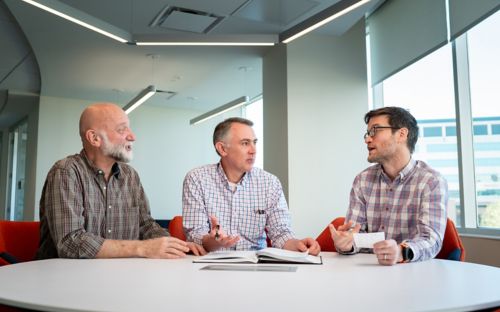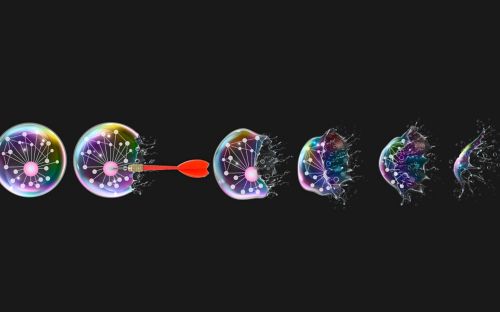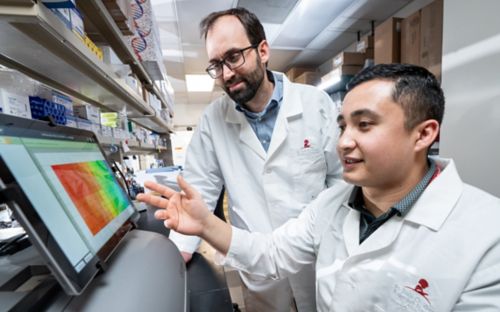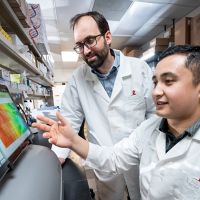For the growing number of childhood cancer survivors, five-year survival is just the beginning

Childhood cancer survivors are living longer and better lives, so much so that the survival paradigm needs to change to set new benchmarks for survivorship research and treatment success.
In childhood cancer survivorship, health officials and advocacy groups use five-year survival as the traditional benchmark of cancer success. As a result for many patients and survivors, five-year survival is synonymous with “cure.” But personally and professionally I know the reality is different.
Tremendous progress has been made in the understanding and treatment of pediatric cancer, in which St. Jude faculty and staff played an important role. Overall, 84% of pediatric cancer patients are alive five years after diagnosis, compared with 63% in 1975. Survival is even higher (94%) for those with the most common childhood cancer, acute lymphoblastic leukemia.
But research from St. Jude scientists and others has shown that pediatric cancer and its treatment leave childhood cancer survivors at an increased risk of chronic, sometimes life-threatening health problems. The risks include additional cancers as well as heart, lung or other problems.
Taking a closer look at long-term childhood cancer survival
I was part of a St. Jude Children’s Research Hospital team that recently made the case for redefining success for childhood cancer survivors. Our recommendations appeared in the Journal of Clinical Oncology. For this study, my mentors Yutaka Yasui, PhD; Les Robison, PhD; Kevin Krull, PhD; and I analyzed data from the National Cancer Institute’s Surveillance, Epidemiology, and End Results (SEER) Program registries.
We wanted to know if gains in five-year survival for childhood cancer patients were maintained over time. While the typical measure for cancer treatment success is five-year survival, survivors diagnosed as children or adolescents have potentially many years or decades ahead of them. For them, longer-term outcomes are critically important.
We calculated excess deaths among childhood cancer survivors diagnosed from 1985 to 2016. Excess deaths reflect the number of reported deaths among childhood cancer survivors above and beyond the expected annual deaths based on sex, age and race.
The SEER data confirmed that cancer deaths have steadily declined during the five years after diagnosis. But overall, excess deaths among childhood cancer survivors declined only modestly during the 30-year period. Excess deaths among longer-term survivors, those more than five or 10 years from their cancer diagnosis, nearly eliminated the survival gains achieved in the first five years.
We hope that this work helps to emphasize the importance of tracking long-term outcomes in pediatric and adolescent cancer to inform the lifelong care these survivors need.
Putting childhood cancer survivorship in perspective
This project is more than just data points for me. I was diagnosed with acute myeloid leukemia 11 years ago when I was 22. My treatment included bone marrow transplantation, which involved total body irradiation. In preparation for transplantation, I met with the radiation oncologist. He gave me the consent form to sign and insisted I read it. There was a long paragraph about late effects associated with radiation, including second cancers.
A light bulb went off. I asked, “Are you are going to treat me with something that potentially could give me another cancer down the line?” I started asking more questions and realized how much the field still had to learn.
That’s when I knew I wanted to do survivorship research. That led me to Robison and Melissa Hudson, MD, at St. Jude. They are pioneers in survivorship research and study authors.
Taking survivorship research into the future
St. Jude has pioneered research to understand, manage and reduce the long-term consequences of pediatric cancer and its treatment. The federally funded, multi-institutional Childhood Cancer Survivor Study is headquartered at St. Jude. The hospital is also home to the St. Jude Lifetime Cohort (SJLIFE) study, the largest cohort of clinically assessed cancer survivors in the world.
Meanwhile, researchers in the laboratory and clinic are working hard to develop novel therapies to help more children and adolescents survive their disease with fewer acute or long-term side effects. But as the population of childhood cancer survivors grows, so does the need to expand our focus beyond the first five years. Raising awareness of excess deaths among longer-term survivors will help to inform national health policy and research.
Four ways to set a new survivorship benchmark
In our recent journal article, we suggested measures to create the database and other tools to launch a new era in survivorship. The proposals included:
- Use the SEER Program to track and report trends in annual excess deaths among childhood and adolescent cancer survivors. If we are truly making progress against cancer, excess deaths should decline over time.
- Support creation of the National Childhood Cancer Registry to provide data to guide research, inform health policy, develop new disease detection and prevention strategies and improve health care for childhood cancer survivors.
- Develop long-term follow-up of clinical trial participants
- Identify and address how survivorship risk differs based on diagnosis. Consider current ALL therapy, which uses risk stratification to guide treatment, as a model for helping survivors of other pediatric cancers live longer, healthier lives.
Many survivors, myself included, do think of themselves as cured. But we also understand that we are living with a chronic disease that will be with us the rest of our lives and very much influence our medical care.






